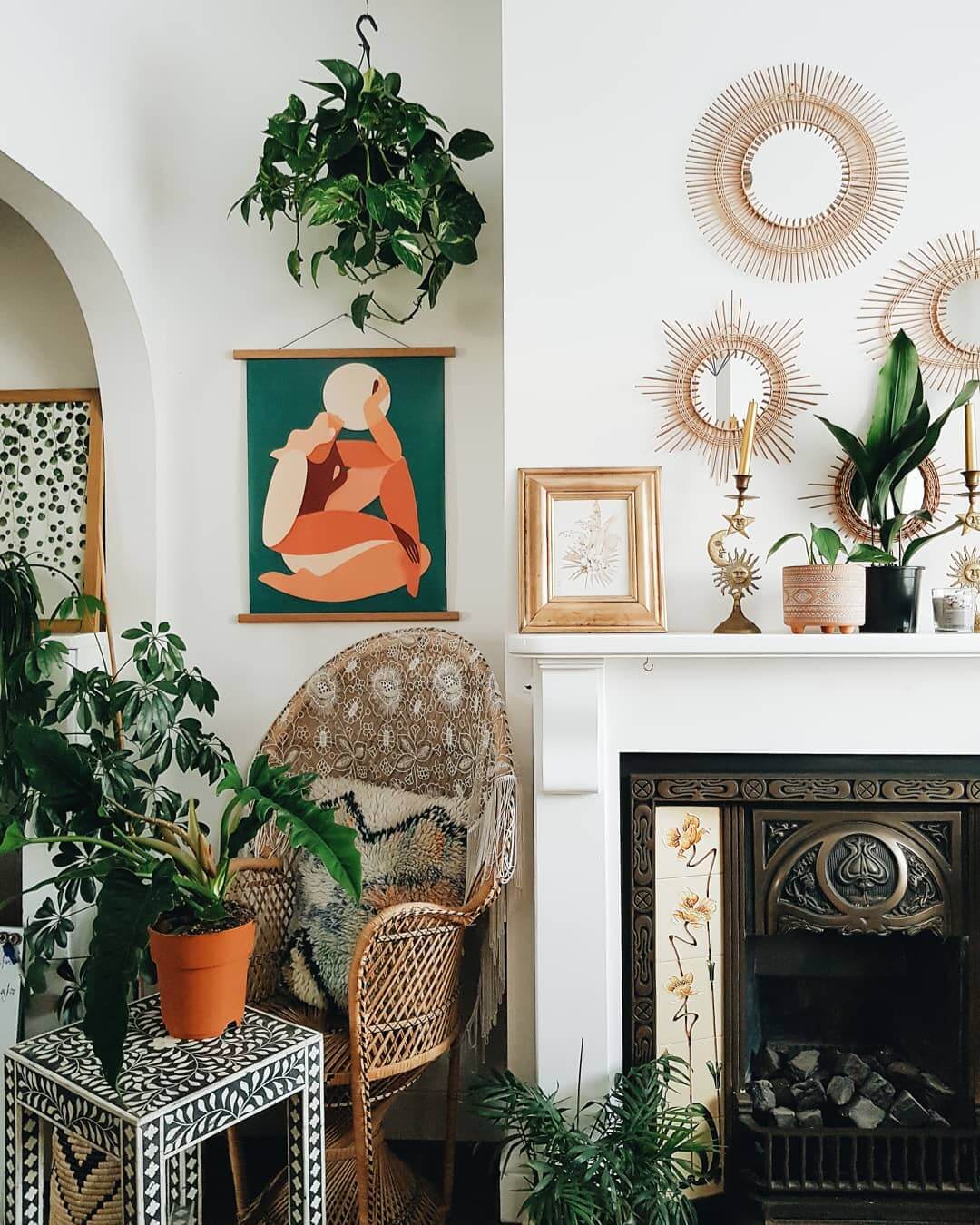Understanding Decorative Mirrors
Decorative mirrors are not just functional objects; they are powerful design elements that can transform your living space. Having worked with various interior styles and having decorated my own home multiple times, I can attest to the magic a well-placed mirror can bring.
From creating the illusion of space to reflecting light and adding artistic flair, decorative mirrors are a must-have for any living room. In this guide, we’ll delve deep into the types, styles, and placement ideas for decorative mirrors that will inspire and enhance your home.
Why Choose Decorative Mirrors?
Decorative mirrors serve various purposes beyond mere reflection. Here are a few reasons why they are essential for your living room:
- Space Enhancement: Mirrors can create an illusion of depth and expansiveness in smaller rooms.
- Light Reflection: They help to maximize natural light, making your space feel brighter and more inviting.
- Artistic Statement: Unique and beautifully designed mirrors can serve as focal points that enhance your room’s décor.
- Versatile Styles: From modern to vintage, there’s a decorative mirror for every taste and interior theme.
Types of Decorative Mirrors
When it comes to decorative mirrors, the variety is vast. Here, I’ll break down the most popular types to consider for your living room:
1. Wall Mirrors
Wall mirrors can come in various shapes and sizes, making them versatile options for any wall space.
2. Floor Mirrors
Full-length floor mirrors make an eye-catching statement and are perfect for larger living rooms.
3. Round Mirrors
Round mirrors, often seen in bohemian or contemporary settings, soften the look of a space.
4. Decorative Framed Mirrors
These come with elaborate frames that can complement or contrast your living room decor.

5. Vintage Mirrors
Adding character to your living space, vintage mirrors bring warmth and a sense of history.
Choosing the Right Decorative Mirror
When selecting a decorative mirror, consider the following factors:
Size and Scale
Ensure the mirror’s size is proportional to the wall and surrounding furniture. A small mirror can get lost on a large wall, while an oversized mirror can overwhelm a small space.
Style and Design
Consider your existing décor. A rustic frame works well in a farmhouse setup, while sleek designs suit modern aesthetics.
Placement
Think about where you want to hang the mirror. Positioning mirrors opposite windows can help reflect natural light.
How to Style Decorative Mirrors in Your Living Room
Here are some creative ways to incorporate decorative mirrors into your living room:
1. Statement Pieces
Create a focal point by choosing a large, ornate mirror and placing it above a sofa or mantelpiece.

2. Gallery Wall
Combine several mirrors of different sizes and styles to form a unique gallery wall.
3. Layering
Layer mirrors with artwork, shelves, and decorative objects to create depth.

4. Reflective Surfaces
Use mirrors alongside other reflective surfaces like glass tables to enhance luminosity.
Comparison of Popular Decorative Mirror Styles
| Mirror Style | Pros | Cons |
|---|---|---|
| Wall Mirrors | Space-saving, versatile, easy to hang | Can be too small for large walls |
| Floor Mirrors | Full-length views, makes a statement, great for styling | Requires floor space, can be heavy |
| Round Mirrors | Softens corners, attractive in groups | Less reflective area, may not be functional in small spaces |
| Decorative Framed Mirrors | Unique designs, adds personality | Can clash with existing decor if not chosen wisely |
| Vintage Mirrors | Brings character, often one-of-a-kind designs | May require extra care, can be fragile |

Personal Experience: How Decorative Mirrors Changed My Living Space
When I first moved into my apartment, the living room felt dull and cramped. After doing some research, I decided to invest in a large, round decorative mirror. Placing it opposite the window brightened up the entire room, creating a lovely reflection of the scenery outside. It became the perfect accent piece—people always comment on its style when they come over!
Maintenance and Care for Decorative Mirrors
Keeping your decorative mirrors looking their best is crucial. Here are some tips:
Regular Cleaning
Use a microfiber cloth and a glass cleaner to remove streaks and dust. Avoid abrasive materials that may scratch the surface.
Check for Damage
Inspect your mirrors regularly for any cracks or damage, especially if they are in high-traffic areas.

Frequently Asked Questions (FAQs)
What size mirror is best for a living room?
The size of the mirror should be in proportion to the wall space and furniture. For larger walls, use bigger mirrors, while smaller spaces can benefit from medium or small mirrors.
How high should I hang a decorative mirror?
Generally, mirrors should be hung at eye level, which is about 57-65 inches from the floor, but this can vary based on your specific space.

Can I use a decorative mirror in a small living room?
Absolutely! In fact, utilizing mirrors can help create the illusion of more space and reflect light, making your small living room feel larger and brighter.
Are there specific colors that work best for decorative mirrors?
Choose colors that complement your existing décor. Silver and gold finishes are versatile, while colored frames can add a pop of color to monotone spaces.